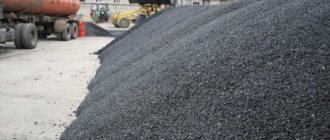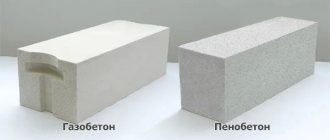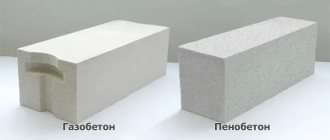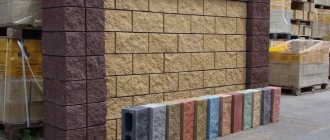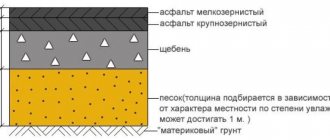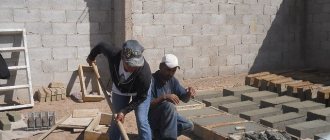- 1 Features of production
- 2 Preparation technology 2.1 Preparation of raw materials
- 2.2 Mixing ingredients
- 3.1 Cyclic mechanism
Asphalt concrete is actively used both in the construction industry and in road work. This material is of artificial origin and is produced at special enterprises with special equipment. Let's take a closer look at what this building material is and what technologies are used to produce it?
The working process of an asphalt concrete plant:
The asphalt manufacturing process consists of several stages that are of fundamental importance in obtaining the finished product:
- Sifting of all components: crushed stone, gravel, sand, special additives is necessary to obtain the components of the desired fraction, free of foreign inclusions. Screening is carried out on equipment with vibrating screens and receiving bins;
- Crushing - required only for raw materials of a larger fraction than required according to the technological map;
- Heating of components - they are loaded into drying drums for uniform heating to the desired temperature;
- The heated material enters the mixer, where it is mixed with bitumen . After completing the mixing cycle, the output is a finished asphalt mixture.
Cooking technology
Let's consider more traditional technologies for producing asphalt concrete mortar, adopted by Gosstandart.
Return to contents
Preparation of raw materials
Change in structure when adding mineral filler.
The components of this material are:
- Sand acts as a fine aggregate that provides load distribution from the road surface to the soil. If you do not mix sand, the binder will spread and crushed stone will be forced to the surface.
- Mineral filler. Underneath this component can be rocks ground to a powder consistency: lime, chalk or sandstone. Their function is to fill the remaining free space. The most resistant of them is sandstone - it can withstand any chemical reactions, which is why it is often used near industrial chemical plants.
- Rubber is crushed to the state of millimeter crumbs, and this is the only way it is added to the composition. Its task is to make the finished composite flexible and resistant to moisture. Rubber-based asphalt concrete decks are much less susceptible to cracking and therefore do not require frequent repair work. However, such road surfaces cost a huge amount of money; therefore, they are used exclusively for particularly important road sections with increased loads, as well as those laid in difficult areas with an aggressive environment.
Preparatory work includes drying and sifting. Aggregates, as a rule, come to production in wet form. The retention of this moisture can compromise the strength properties of the asphalt deck. Therefore, by heating to 200 degrees, mineral raw materials are dried.
Before sifting, mineral aggregates are crushed and then sorted into fractions. If necessary, drying can be repeated after any stage of preparation. This depends on the type of technology used.
Return to contents
Mixing ingredients
Hot asphalt concrete.
According to the manufacturing method, asphalt concrete composites are divided into three types:
- cold;
- warm;
- hot.
These varieties differ from each other in the temperature at which the ingredients being combined are brought together during cooking. The production of warm or hot asphalt concrete solution is carried out by mixing other ingredients of the same temperature to a strongly or moderately heated binder. For cold mixtures, only one component is heated.
Mixing of the constituent ingredients is carried out at a temperature of 160 degrees. Using a mechanical belt conveyor, sand and gravel are poured into a common receiver. The solution can be crushed with aggregates and bitumen together. Or you can first combine crushed stone with sand separately and bring it to homogeneity.
During the process, it is necessary to constantly monitor the temperature inside the bin with materials so that it is always the same. After the finished solution has reached the desired thickness, it is transferred inside a special container for storage. The finished mixture is stored at a temperature of 150-180 degrees.
This container is capable of retaining the heat of the composite for up to four days. During this time, the asphalt concrete must be delivered to the customer, since further the material will begin to lose its strength qualities. Additional impurities are added while mixing the main components. Rubber crumbs are mixed into the ready-to-use, heated mixture.
Return to contents
Basics of efficient asphalt production:
To organize the production of asphalt mixture, equipment is required that meets the following principles:
- Long service life guaranteed by the manufacturer;
- Minimum number of planned replacements of components and assemblies;
- Possibility of training customer personnel directly at the manufacturer;
- Using developments from well-known industry enterprises from around the world;
- Possibility of modification of equipment to solve specific customer problems;
- Flexible production and installation times.
A good manufacturer will not only offer equipment that meets the specified standards, but will also provide detailed advice on the entire asphalt production. His proposal should provide the opportunity to purchase asphalt plants with the required parameters.
For example, in terms of dimensions, production indicators, and working with a certain type of raw material. The customer only needs to provide information. Then the engineers themselves will prepare the necessary project from a standard version, or offer an individual one, created for this customer. Only this approach will allow us to obtain a profitable asphalt plant.
Asphalt concrete plants for asphalt production:
We, being the official dealer of PJSC Kredmash, offer reliable asphalt concrete plants. To get a consultation, call the toll-free number: 8 (800) 333-47-08.
Production Features
Asphalt concrete is based on loose or solid aggregates of natural origin, as well as binding materials. When producing this mixture, it is very important to achieve ideal homogeneity, as well as the required thickness and density, when mixing the ingredients. This is the essence of making asphalt concrete mortar.
Today, constant work is underway to invent new technologies for the production of asphalt concrete materials. The manufacturing process is constantly being improved to improve the strength and other characteristics of the composite. Practical studies have shown that waste from machine rolls and other rubber materials is excellent for this purpose. This production technique has long been in great demand abroad.
Foreign production of asphalt concrete mixtures also tends to improve the aesthetics of this building material. This is done by adding special dyes inside the composition. Our manufacturers also follow this method, however, due to some circumstances, colored asphalt concrete has not gained special recognition here.
Return to contents
Types of asphalt concrete production plants
There are two types of asphalt concrete production plants: cyclic and continuous. They differ in mixing processes, dosage of components, amount of material produced, methods of storing it, as well as mobile capabilities.
Return to contents
Cyclic mechanism
The cyclic mechanism has additional technical equipment in the form of a tower and a screen, through which raw materials are sorted. Next, the material is divided into certain parts, each of which is individually sent to dry inside the drum. This production technique makes it easy to modify a given composite recipe.
The disadvantage of this production process is the stationary and immobile nature of the installation, as well as the small volumes of the output product. In addition, the screening process leads to some idle time in highly heated bins - either they are empty, or one of the ingredients is missing. Thus, the quality of the composite deteriorates. This may result in losses. Typically, this type of asphalt concrete mixture production is used in large cities.
Return to contents
Continuous Asphalt Concrete Composite Plant
The continuous asphalt composite plant is famous for its simplicity and does not require any towers. The device can be transported without problems and is easy to install. However, it also has its pitfalls. One of these stones is considered to be the absence of a rumble. After all, most of the crushed stone used needs fractionation, and without screening this is unrealistic. Due to this drawback, the recipe changes and the quality characteristics of the resulting product deteriorate.
Some manufacturers are addressing this shortcoming by adding a stand-alone sorter to the equipment, while maintaining a cost-effective manufacturing process. The main positive point here is that production is carried out continuously, without stopping, which ultimately gives much more products, and, accordingly, income.
Return to contents
Production area
Asphalt plants are located in the open air. The location of the asphalt plant is classified into the following categories:
- Near objects under construction - roads
- Stationary – with an asphalt plant operation plan for more than 10 years at one place
- Near the railway along which all the materials necessary for production are transported to the asphalt plant
- Inventory, having a collapsible design, with a service life of no more than 4 years
- Mobile, working on one site for up to 1 year, and then transferred to another place
All equipment necessary for the asphalt plant can be purchased both domestically and imported. The approximate cost of an imported asphalt plant is from 12 (mobile) to 100 million (stationary) rubles, Russian - from 1.2 (mini-asphalt) to 85 million rubles.
Basic principles of pavement structure design
Designing the composition of an asphalt concrete mixture consists of calculating the optimal ratio of components, as a result of which the indicators of the main characteristics of asphalt concrete of a given type and corresponding grade will meet the technical standards and requirements of GOST 9128-13.
Method for determining the grain structure of asphalt
Various methods for designing asphalt concrete compositions have been developed and used.
In modern construction, the most common method for constructing limit curves of the grain structure of the mineral part of road concrete (see photo), which is based on the following instructions:
- In order to ensure the strength, economy and durability of the coating, its mineral component must have sufficient density, which is ensured by a certain content of coarse and fine grains in the overall composition of the fillers.
- The structure of the grain part is limited by the limit curves of the permissible amount of a given grain fraction.
- The minimum bitumen content must correspond to the physical and mechanical properties of asphalt concrete of the required grade, taking into account the technical requirements of GOST 9128-13. The optimal volume of the component is established experimentally based on tables and graphs of tests performed.
Setting the design parameters of the mixture
The composition design process consists of the following stages:
- determining the characteristics and quality of the initial components, assessing their suitability for a given brand;
- calculation of the mineral part from selected materials;
- determining the rational amount of bitumen;
- specification of the composition of the mixture according to a detailed study of its physical and mechanical qualities.
A necessary condition for designing a composition is a reasonable and accurate technical specification.
To draw up technical specifications, you must have the following construction, design and operational data:
- design design of the road pavement indicating the thickness of the layers of all coatings;
- technical category of the road;
- characteristics of the traffic mode of road transport on the designed road section;
- expected changes in road and climatic conditions during the construction and operation of the facility.
- balanced characteristics of all available starting materials.
What determines the thickness of asphalt?
Depending on how rigid the material acts as the base of the canvas, the thickness of the finished asphalt changes. This parameter also depends on the expected loads.
One layer
Single-layer asphalt pavement is used for pedestrian paths and small parking lots near shops. Also, one layer is enough if there is concrete at the base of the canvas. One layer can withstand the maximum load of a passenger car, which is taken into account during installation.
Two layers
The two-layer option is applicable when the base is crushed stone or broken brick. Only light vehicles are also allowed on this surface. It is placed in parking lots near large buildings. If the base is concrete, then the expected loads increase - the road allows the movement of both passenger cars and buses or trucks.
Three layers
A three-layer asphalt concrete pavement is considered the norm for laying intercity routes. Due to its strength and thickness, it can withstand passenger cars and trucks. However, a heavy truck will not be able to pass. It is important to adhere to the laying technology: the base is crushed stone or broken bricks, laid in a layer with a thickness of 30 cm.
Four layers or more
Concrete or crushed stone (fractions 4 and 5) are used as the base. The four-layer asphalt surface can withstand loads from both cars and trucks. Mainly installed on highways.
